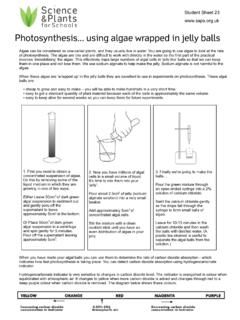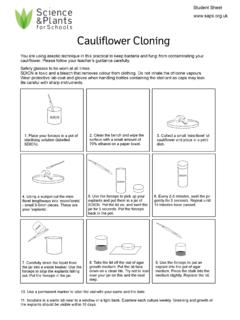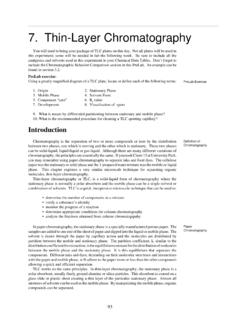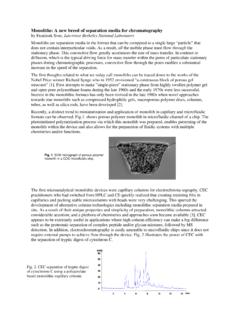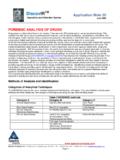Transcription of Thin layer chromatography for plant pigments
1 thin layer chromatography for plant pigmentsRead these instructions carefully before you start. Work quickly to get the best : The solvents used in this investigation are tak1. Cut a TLC plate into small stips x cm, so that they fit your tubes. Do not touch the surface of the Place 2 - 3 wheat or grass leaves on a slide. Use a second slide to scrape the juice Add 6 drops of propanone to the green mush and mix. Transfer the dark green liquid to a small watch Repeat steps 2 and 3 until you have about 20 drops of extract. Use a hair dryer to remove all the water from the When the extract is completely dry, add 3 - 4 drops of propanone and mix the extract with a fine paint Use the brush to transfer tiny drops of extract to the TLC strip.
2 Keep the spot diameter to less than 2 mm. Dry the spot thoroughly between each addition. Repeat until the spot is a very dark Sheet study guides, project ideas, and advice on careers and further study in biology, visit Slot the TLC strip into a slit in the cork and put it into an empty tube. Mark the tube below the level of the spot. Remove the TLC Add running solvent to the mark. Put the TLC strip back in the tube. Make sure that it does not touch the sides of the tube. Watch the chromatogram After about 4 minutes remove the strip and immediately use a pencil to mark the solvent Measure the distance run by the solvent front and by each of the pigments . All measurements should be made from the centre of the original spot to the front of each pigment Calculate how far the pigment has gone relative to the solvent front.
3 This is the Rf value. (Rf = the distance run by the pigment divided by the distance run by the solvent.)12. Draw a suitable results table. For each pigment record: the distance run, its colour, Rf value and possible identity.







